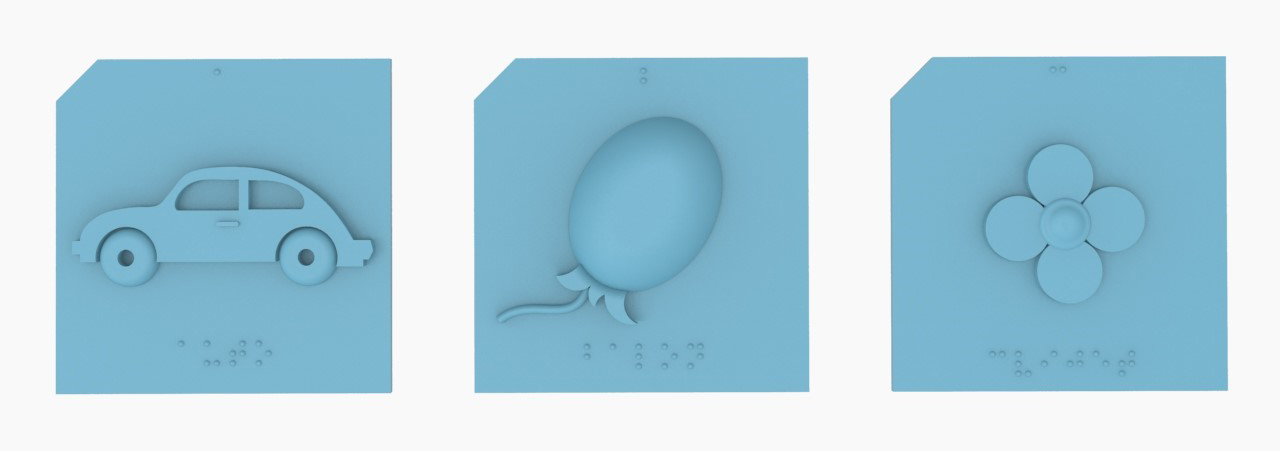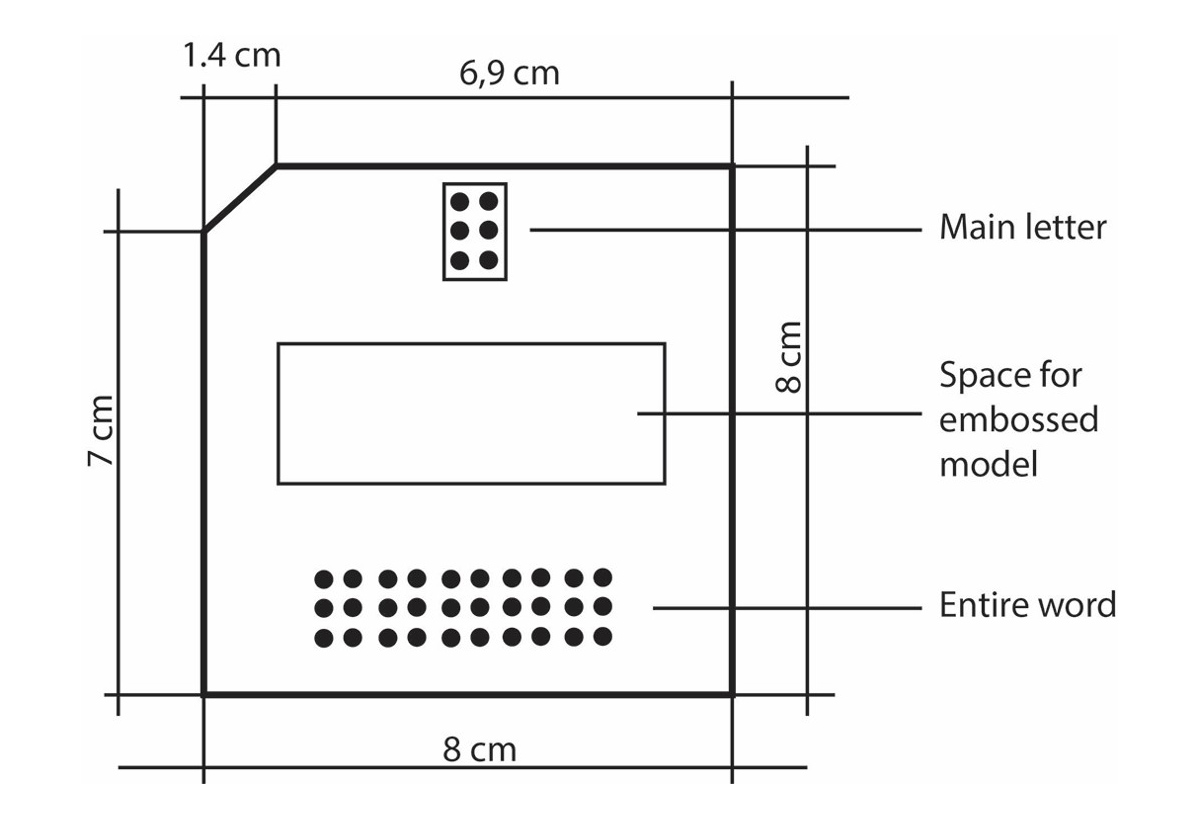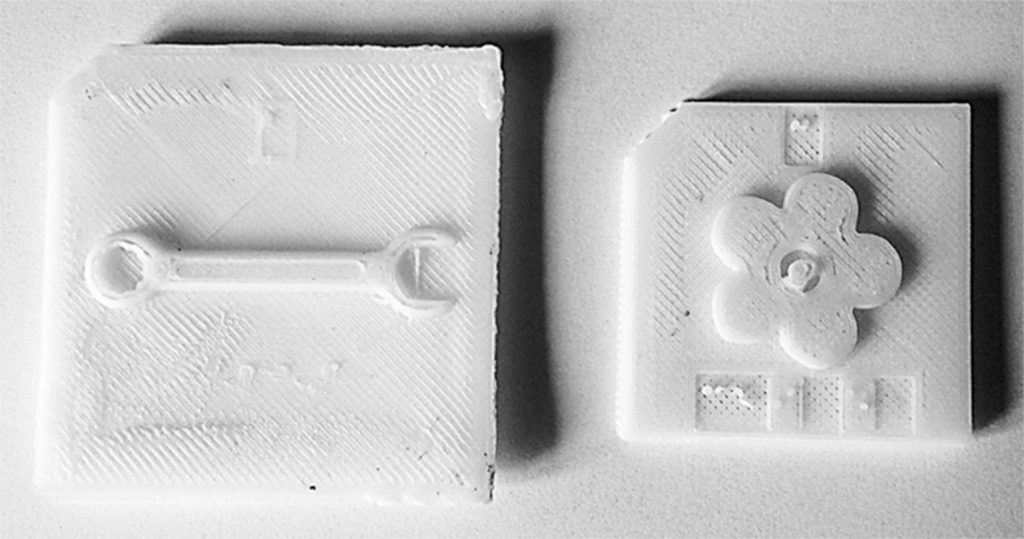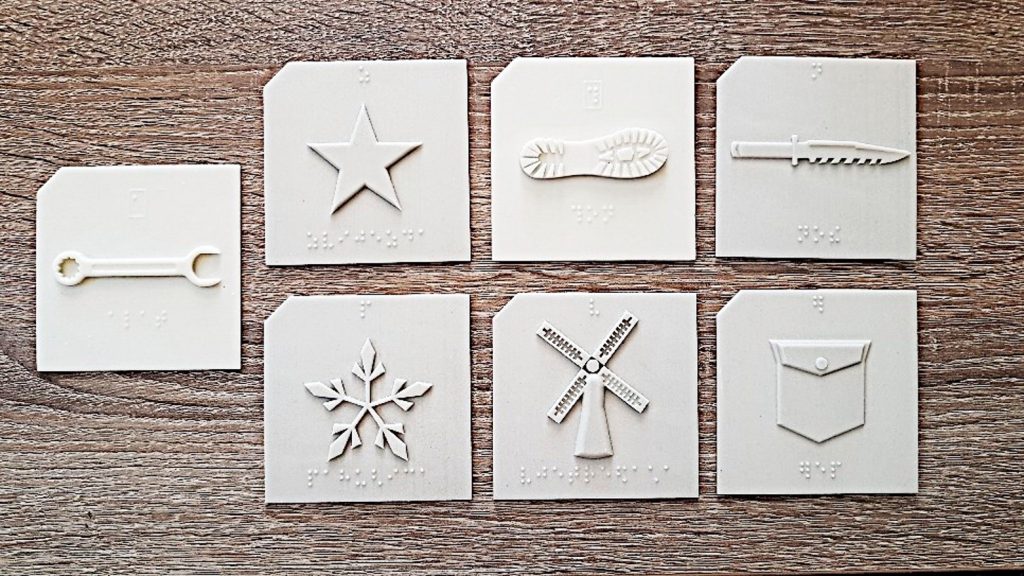3D printed tiles for visually impaired people
Lidija Mandic
University of Zagreb Faculty of Graphic ArtsLidija Mandic
University of Zagreb Faculty of Graphic ArtsThe use of 3D printers for people with disabilities is multiply, specially for blind and visually impaired target group. One way is to print space model to better understand their surroundings, another is to use embossed 3D printed tiles as a supplemental teaching aid.

When designing the first 3D prototype, an emphasis was made on determining the correct size of the tiles while keeping in mind the necessity for rational placement of the three tile segments. Tiles are uniformly organized, and have 3 sections (1st section = Braille letter, 2nd section = embossed model, 3rd section is whole word in Braille). After design process, we printed the tiles on 3 different 3D printers, and after each print we tested tiles in institution for blind and visually impaired. Each 3D printer has some pros and cons regarding the printout itself (e.g Braille letter unreadable, tiles brittle etc.). For 3rd iteration of tiles we combined 3D printing for embossed model and for Braille letter/word we used regular printer that prints varnish in layers. This combination of printers gave the best results. Evaluation of plates was held in aforementioned institution, and we asked the participants questions about readability and recognisability of embossed models.
FDM (fused deposition modeling) 3D printer produces previously prepared 3D model by extrusion of heated plastic (usually ABS plastic) through a nozzle that deposits the plastic layer by layer onto the surface . The quality that printer system offers depends on the maximum resolution of the printer measured in microns, which are used to define thickness of one 3D printed layer of plastic (i.e. 20 microns is 0.02 mm). This implies that thinner layers produce prints, in this situation tiles, of higher quality. Negative sides of previous versions for first 3D printer are roughness, bending and Braille unreadability.
“binder jetting” or “drop-on-powder” 3D printer consists of several main parts (roller, print assembly, build piston and powder bed). Negative sides is brittleness of tiles.
You could find information of 3D printers on https://www.techradar.com/news/best-3d-printer

Layout of tile

Tile printed with FMD 3D printer

Tiles printed drop-on-powder 3D printer
“The European Commission support for the production of this publication does not constitute an endorsement of the contents which reflects the views only of the authors, and the Commission cannot be held responsible for any use which may be made of the information contained therein.”

"The European Commission support for the production of this publication does not constitute an endorsement of the contents which reflects the views only of the authors, and the Commission cannot be held responsible for any use which may be made of the information contained therein."